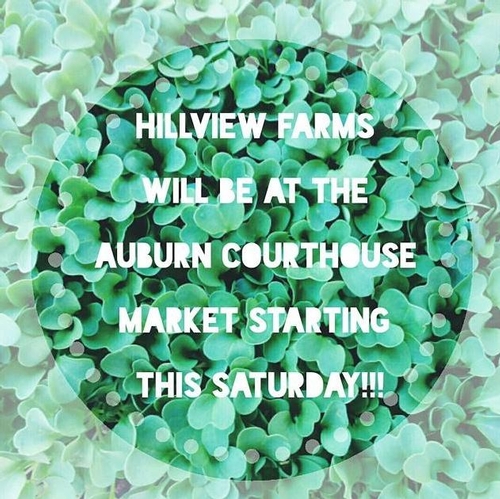Increase Sales by Posting to Social Media
Social media platforms such as Facebook, Twitter, and Instagram are great places to tell the story of your farm. In a recent survey conducted by Eat Local Placer and Nevada, 60% of participants chose “supporting local farmers” as the primary reason for purchasing locally grown fruits and vegetables. Our community and your customers care about you and your farm business! By sharing photos, thoughts, recipes, the good times, and the bad times you are creating a way for local consumers to feel connected to your farm.
If you are already sharing your farm business on social media, it's a great idea to begin thinking strategically about how you post, when you post, and what you share. Everything that you share on the internet (including what you share on your personal profiles) affects your brand. And only sharing what you have for sale and when it is for sale is no fun for anyone- these posts will be regarded as SPAM and your social media profiles will lose attention. The better choice is to think about a larger strategy for sharing the activity of your farm, engaging your community by providing useful and interesting information, and also providing opportunities for people to purchase your products when available.
I like to think of posting to social media as story-telling. Many of you chose to be farmers because of the lifestyle it affords. That lifestyle, or at least a romanticized version of the farming lifestyle, is very popular right now. Share your life as a real farmer. Post a photo of your field when you first walk out in the morning. Post of photo of your farm-fresh lunch and include a recipe. Share your thoughts on the drought and its impact on local agriculture. You will gain followers (who are also potential customers) by providing information that is engaging and images that are striking.
I challenge you to not paint too rosy of a picture of your farm. Be honest with who you are and what life is like on your farm. Sharing the bad times may engage your community in a “call to action.” Check out the response our farm received when we broke the news about our high-tunnel blowing over in a windstorm. There may be some catharsis in sharing the hard times; so often we farm alone and can feel isolated and unappreciated in hard times when, in reality, we are a part of a community that is deeply invested in our well-being.
To craft a social media strategy that will help increase sales, follow these simple rules:
- Post useful and interesting information. Remember- you must be actively farming for your story to have value.
- Follow the 80/20 rule. 80% of your posts should be interesting and useful, 20% of your posts should encourage sales of farm products.
- Post regularly. Avoid posting erratically. Try to share a couple of times a day.
- Post at the right time. Posts between 1:00 p.m. and 4:00 p.m. tend to be viewed by the most people.
- Share your personal life with intention. Everything you put on the internet affects your business reputation. Think wisely about the parts of your life you may want to keep out of the public domain.
- Have a strategy. Simply using a social media platform is not a marketing strategy. What, how and when you post is the strategy. Set a goal, like increasing sales of a new crop at the farmers' market, and then craft your posts with this goal in mind.
- Make your social media presence known. Follow and share other peoples' posts to increase your own visibility. Ask your friends to “Like” you on Facebook. Be sure to put up a sign at the farmers' market letting your customers know how to find you on the internet.
- Don't become addicted! There is so much information on the internet. Don't get bogged down by social media posting and don't spend too much time doing it. Set limits for yourself if you feel like you are spending too much time online. Those carrots won't plant themselves!


